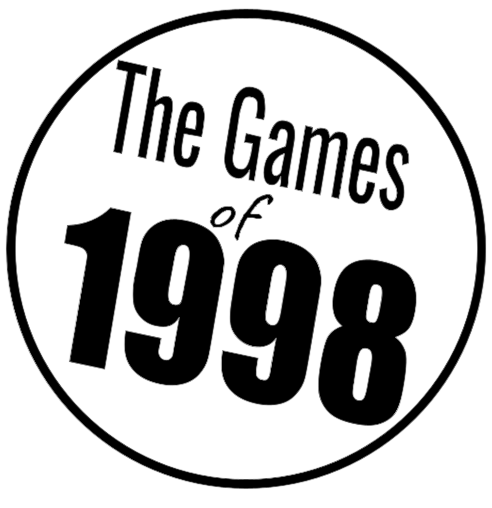Star Wars: Rogue Squadron
Release Date - December 3, 1998 (PC, US), December 7, 1998 (N64, US)
Developer - Factor 5, Lucasarts
Publisher - Lucasarts
Platform - PC, Nintendo 64
A long time ago, but not so far away… Star Wars: Rogue Squadron flew in under the radar onto PC and Nintendo 64. Inspired by the comic book series Star Wars: X-wing Rogue Squadron, the game takes place between Star Wars: A New Hope and The Empire Strikes Back, putting players into the role of Luke Skywalker to pilot some iconic Star Wars spacecraft.
Supposedly inspired by a level from the highly praised Star Wars: Shadows of the Empire (1996) in which players piloted a snow-speeder aircraft, Rogue Squadron would be entirely based around third-person flight action. Players joined the titular Rogue Squadron, an elite group of the twelve best pilots from the Rebel Alliance, including the ace pilots from the films; Luke Skywalker and Wedge Antilles. Rogue Squadron is trusted to take on the most dangerous missions against the powerful and evil Empire.
Piloting an X-Wing against the Empire was many a child’s (and some adult’s) dream.
The game contains sixteen missions to complete, each broken into smaller sub-missions with various goals. They’re also set across various planets from the Star Wars universe, each with different vistas and ambience. You’ll be flying through the icy landscape of Hoth or green rolling hills or even desert planets or futuristic cityscapes. Depending on the mission, you’ll also be piloting different craft, each with their own specialties, varying from fast but fragile ships to heavier, slower ‘bomber’ style craft. The missions are also quite varied, and players will find themselves alternating between going on the offence with seek and destroy missions, or playing defensive roles as they protect important targets or make daring rescues.
Each mission is graded on several factors including completion time, number of enemies destroyed, shot accuracy, number of friendly craft and structures saved and number of bonuses collected. Depending on how well you did, you’ll be granted a medal of bronze, silver or gold. Beyond providing some replay value to better your attempts with repeat play-throughs, you can also unlock some cool content by gaining better medals. These include some hidden missions including the immortal ‘Death Star Trench Run’ from A New Hope! You can even unlock more spacecraft from the films, but I won’t spoil what they are here!
Using snow speeders to trip up AT-AT Walkers has to be one of the most beloved scenes in the franchise.
The graphics were quite impressive for the time, especially on the Nintendo 64 version. The game was praised for high levels of detail in the models and big levels to fly around in. There were some impressive examples of real-time lighting and the explosions were particularly exciting with debris flying from the wreckage of enemy craft. Even just turning your ship resulted in the wing flaps adjusting accordingly! It’s clear that a lot of love went into recreating that Star Wars feeling. Of particular note is the fact that this was one of the first games to use the Nintendo 64’s Expansion Pak (which doubled the console’s available RAM to 8MB) to run at a higher resolution. When using the Expansion Pak Rogue Squadron could run at double the resolution, at 440i instead of the standard 240p.
Likewise, the sound design was also highly praised, with over 40 minutes of speech and 40 minutes of music! Not as impressive for a CD-ROM release on PC, but hugely impressive for the Nintendo 64 Cartridge. Along with an atmospheric soundtrack, the game of course contains the unmistakable sound effects from the films. The audio becomes a useful gameplay tool as well; the surround sound options actually provide clues and audio cues for what’s happening and even what direction it's coming from!
64 Mag takes an excited look at Rogue Squadron in their 22nd issue.
In a work of commendable secrecy from Factor 5, Rogue Squadron contained one of the best-kept secrets in gaming history… With the upcoming, and highly anticipated prequel film The Phantom Menace (the first Star Wars film in fifteen years!) coming to cinemas in May of 1999, the developers decided to include a ship from this film in the game. The ‘Naboo Starfighter’ was programmed into the game, using design art from the upcoming film. The inclusion of this ship had to be kept secret until the film’s release (six months after the game launched!). To this end, most of the development team didn’t even know about the inclusion of this ship in the game, and a complex scrambling system was used to hide the ship’s code from any potential gamers using cheat cartridges to comb through the game’s files. Finally, when the time for the reveal came, LucasArts unveiled a code to the public that would allow the craft to be unlocked! Six months after the launch, the game still had some new secrets to find!
Varied locations keep the gameplay fresh, and leaves you excited to see where Rogue Squadron is next deployed in the galaxy.
Critics were very impressed by Rogue Squadron, with high praise being garnered for the fun flight based gameplay, exciting battle scenarios and plotlines and settings that dovetailed nicely into the Star Wars movies. The game was a commercial success too, with over one million copies sold by August 1999.
Rogue Squadron would go on to spawn two sequels developed and released for the Nintendo GameCube; Star Wars: Rogue Squadron II: Rogue Leader (2001) and Rogue Squadron III: Rebel Strike (2003).
With an enduring legacy, Rogue Squadron remains one of the best examples of Star Wars gaming.









